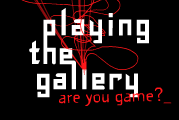
Manuscripts are on my mind. At the 2007 Congress I heard a lecture by Peter Stoicheff about the architecture of the page. Stoicheff talked about Otto Ege, a manuscript trader who cut up manuscripts and sold sets of pages – one (set) ended up at the University of Saskatchewan and was featured in an exhibit Scattered Leaves that ran during the conference. I was fascinated first by his reorientation from the book to the page and then by the project of Remaking the Book – virtually reconstructing the books that were scattered across the sets Ege assembled. Stoicheff pointed out that it is easy to criticize Ege for cutting up books to sell pages, but went on to ask about the history of the book as the privileged object. The immediate horror we feel when we hear or see the cutting up of a book hints at how fundamental and unexamined an object the book is to academics. Stoicheff’s The Future of the Page (conference and book)
I was reminded of this story while reading about the Karpeles Manuscript Library Museums, two of which are in historic buildings nearby in Buffalo. David Karpeles has put together what is supposed to be one of the largest private manuscript collections and makes many of the manuscripts available both through his museums and online through the Karpeles Manuscript Library. I particularly like the neat interface for viewing the manuscript with a lens to see the plain text. The web site for the Museums, however, is idiosyncratc, with music (including O Canada) that plays and poor navigation. Is Karpeles another manuscript maverick like Otto Ege?
 I just gave a paper for the
I just gave a paper for the 

